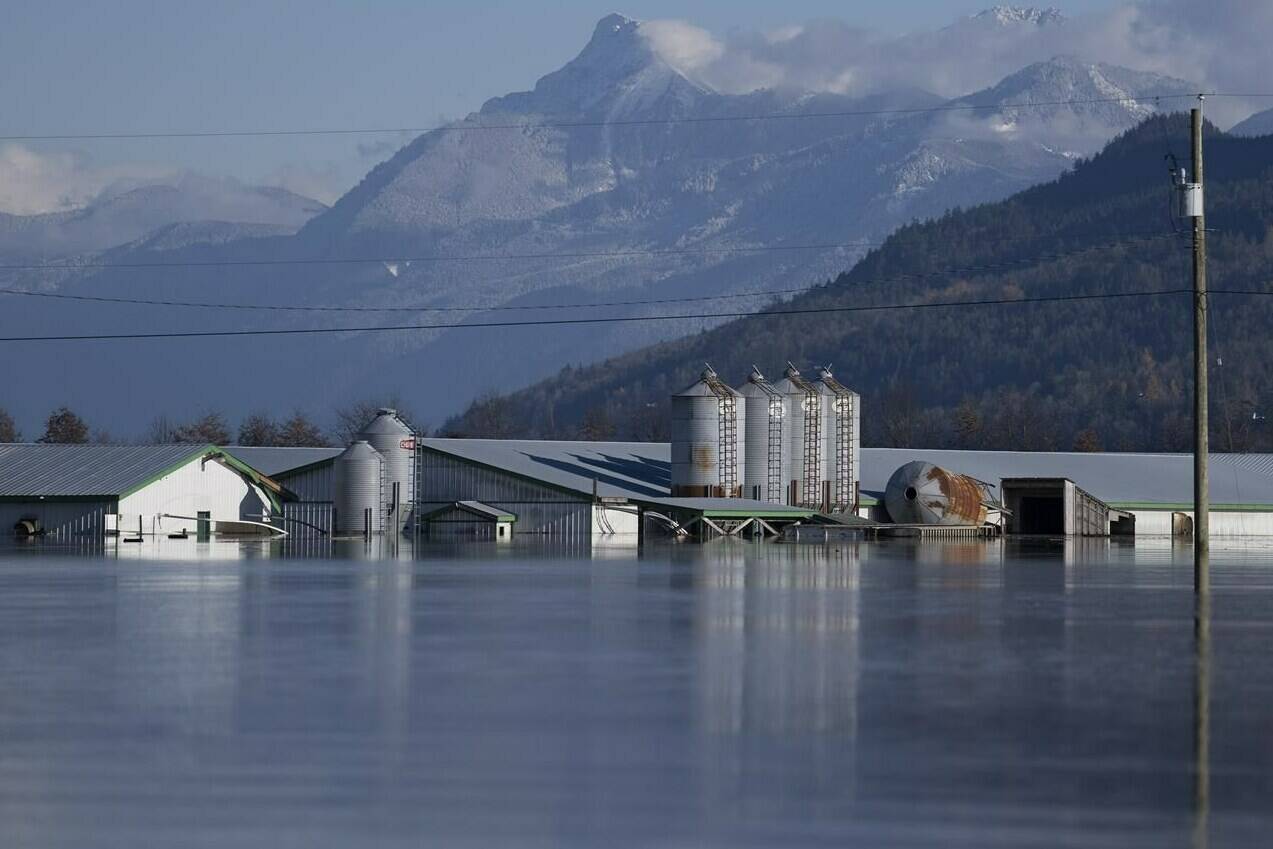Many British Columbia farmers had “an emotional year” as they worked to recover from catastrophic flooding last November, the province’s agriculture minister says.
Lana Popham said most dairy and poultry farmers are now operating “back to normal” and the majority of annual field crops were planted as usual, but the sector is still “keeping its fingers crossed” for better weather this year.
The province will continue to communicate with farmers to find solutions to reduce flood risks for the hard-hit Sumas Prairie and Fraser Valley areas, and to ensure a quicker response during future climate-related disasters, the minister said Tuesday.
“We know these extreme weather events related to climate are going to continue, so we’re looking at new programs that will help fund climate adaptation and mitigation projects,” she told a news conference highlighting recovery work since a series of so-called atmospheric rivers deluged southwestern B.C. a year ago.
About 630,000 chickens, 420 cattle and 12,000 hogs died in the Sumas Prairie as the rain and flooding inundated homes, barns and farmland, washed out highways and caused landslides that killed five people.
At the peak of the flooding, more than 1,100 farms were under evacuation order or alert, and 150 square kilometres of farmland was swamped. More than 6,000 dairy cows were temporarily moved to different farms to keep them safe from flooding.
Cattle farmer Richard Bosma said last November was an emotional time for farmers, but the community bonded together to save as many animals as possible.
“This is what we do. We look after our animals, and (we’re) happy to do it for all British Columbians,” he told the news conference.
But, Bosma, who works at Vedderlea Farms in Abbotsford, said he is still nervous for winter.
“We’ve already had two of these atmospheric rivers in the last week and a half and it brings back some feelings of (post-traumatic stress disorder), I can tell you,” he said.
Popham said her ministry is working to make sure mental health supports are available to farmers.
“As people in this valley move into the next tranche of tough weather, especially over the winter, they need to know that British Columbians have their back,” Popham said. “The pain is pretty deep, so we want to make sure we’ve got the mental health resources in place, and we do right now.”
It’s estimated the flooding that stretched across the Fraser Valley into the southern Interior caused about $285 million in losses for B.C.’s agricultural sector.
The flooding also “showed that our agriculture and food production sector can overcome heartbreaking loss,” Popham said. “Now it’s up to all of us, as British Columbians, to continue to lift farmers up and get behind them and to buy B.C. as much as possible.”
— Brieanna Charlebois, The Canadian Press
RELATED: Flooding in B.C. ‘testing the resilience’ of dairy farmers, says association
RELATED: B.C.’s flooding was ‘most costly’ severe weather event ever for province: insurance experts

